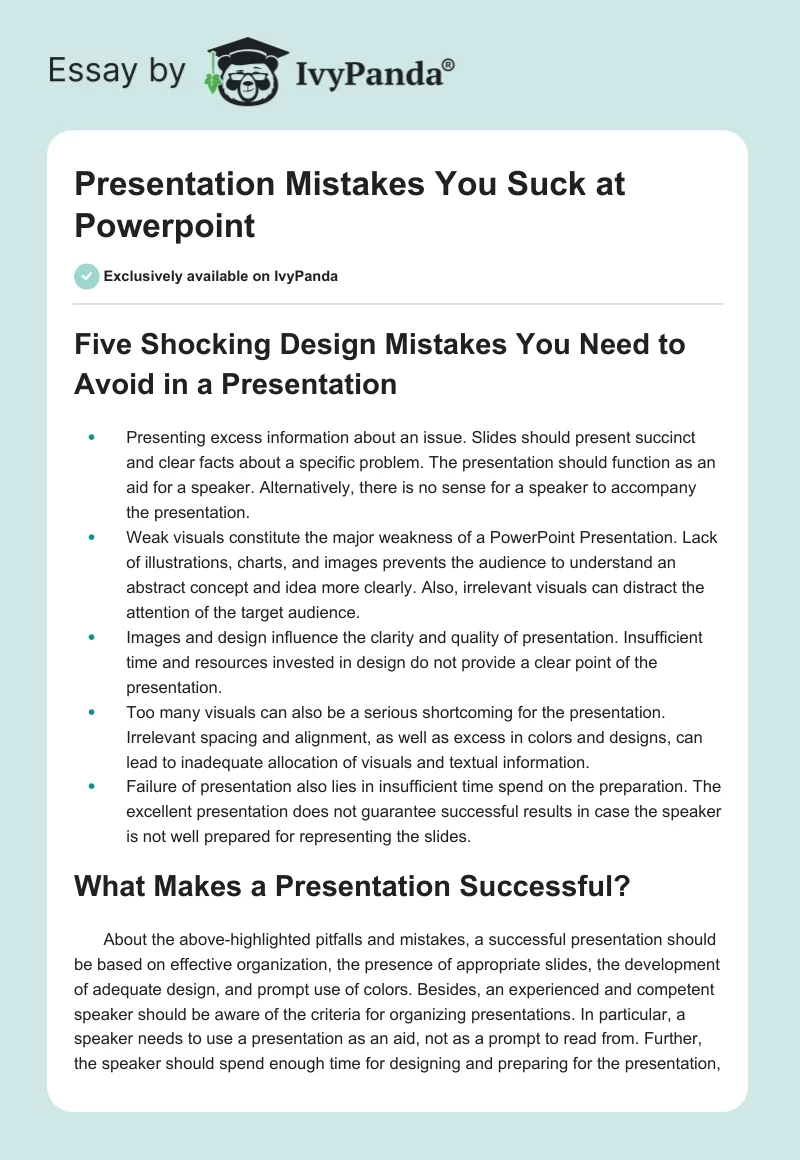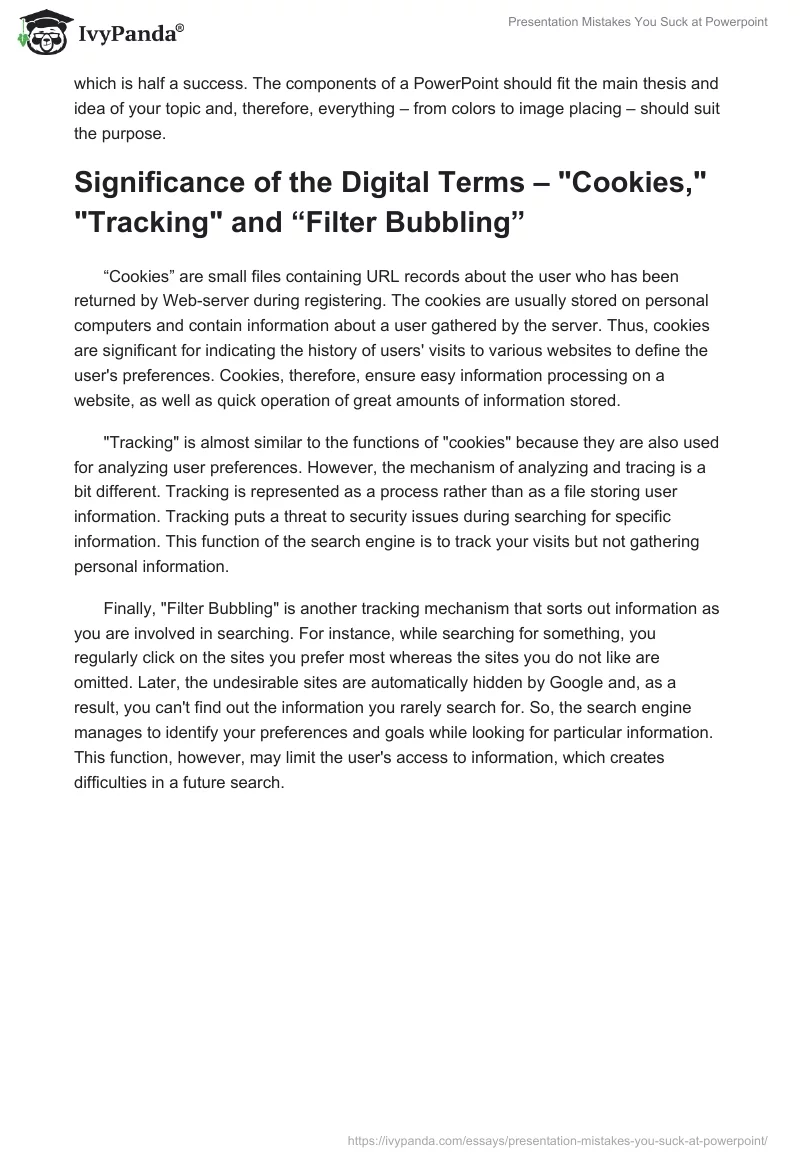Five Shocking Design Mistakes You Need to Avoid in a Presentation
- Presenting excess information about an issue. Slides should present succinct and clear facts about a specific problem. The presentation should function as an aid for a speaker. Alternatively, there is no sense for a speaker to accompany the presentation.
- Weak visuals constitute the major weakness of a PowerPoint Presentation. Lack of illustrations, charts, and images prevents the audience to understand an abstract concept and idea more clearly. Also, irrelevant visuals can distract the attention of the target audience.
- Images and design influence the clarity and quality of presentation. Insufficient time and resources invested in design do not provide a clear point of the presentation.
- Too many visuals can also be a serious shortcoming for the presentation. Irrelevant spacing and alignment, as well as excess in colors and designs, can lead to inadequate allocation of visuals and textual information.
- Failure of presentation also lies in insufficient time spend on the preparation. The excellent presentation does not guarantee successful results in case the speaker is not well prepared for representing the slides.
What Makes a Presentation Successful?
About the above-highlighted pitfalls and mistakes, a successful presentation should be based on effective organization, the presence of appropriate slides, the development of adequate design, and prompt use of colors. Besides, an experienced and competent speaker should be aware of the criteria for organizing presentations. In particular, a speaker needs to use a presentation as an aid, not as a prompt to read from. Further, the speaker should spend enough time for designing and preparing for the presentation, which is half a success. The components of a PowerPoint should fit the main thesis and idea of your topic and, therefore, everything – from colors to image placing – should suit the purpose.
Significance of the Digital Terms – “Cookies,” “Tracking” and “Filter Bubbling”
“Cookies” are small files containing URL records about the user who has been returned by Web-server during registering. The cookies are usually stored on personal computers and contain information about a user gathered by the server. Thus, cookies are significant for indicating the history of users’ visits to various websites to define the user’s preferences. Cookies, therefore, ensure easy information processing on a website, as well as quick operation of great amounts of information stored.
“Tracking” is almost similar to the functions of “cookies” because they are also used for analyzing user preferences. However, the mechanism of analyzing and tracing is a bit different. Tracking is represented as a process rather than as a file storing user information. Tracking puts a threat to security issues during searching for specific information. This function of the search engine is to track your visits but not gathering personal information.
Finally, “Filter Bubbling” is another tracking mechanism that sorts out information as you are involved in searching. For instance, while searching for something, you regularly click on the sites you prefer most whereas the sites you do not like are omitted. Later, the undesirable sites are automatically hidden by Google and, as a result, you can’t find out the information you rarely search for. So, the search engine manages to identify your preferences and goals while looking for particular information. This function, however, may limit the user’s access to information, which creates difficulties in a future search.


